IT WAS developed by De Beers to detect theft of diamonds by its miners. It has morphed into a machine that has saved lives and radically changed the way doctors in South Africa and across the globe deal with traumatic injury.
It is the Lodox, a South African invention that is a world first: a full-body, digital X-ray scanner that is extremely low dose (90% less radiation) and produces diagnostic-quality images equivalent to, or better than, those taken by conventional X-ray machines. It does so in a fraction of the time.
The scanner — in use at state hospitals and one private clinic in South Africa and in eight other countries including the US — featured extensively in this week’s episode of the hit American TV hospital drama series Grey’s Anatomy, which is broadcast on M-Net.
Lodox Systems, the Sandton-based company that developed and makes the device, did not even have to pay for the extensive product placement, says CEO Pieter de Beer.
"The producers of Grey’s Anatomy approached us saying they had done all the research and wanted to use the machine in the series because it was such a medical breakthrough," Mr de Beer says.
"When I read the script for last night’s episode, I couldn’t believe our luck," he says. "It was like a Lodox advertisement."
The actors playing the medical staff in the series certainly are fulsome in praise of the machine. They mention it by name over and over, and describe it variously as "the most cutting-edge tool in diagnostics in the world", and "freakin’ magical".
Internationally renowned trauma surgeon Dr Ken Boffard says South African doctors use Lodox 100% of the time — when they have access to it.
Dr Boffard is professor of surgery and trauma surgery at Charlotte Maxeke Johannesburg Academic Hospital, clinical head of department at Wits University Medical School and head of trauma at Milpark Hospital.
He is part of the team that helped move the machine from the mining world into accident and emergency medicine. That involved adapting the device through collaborative research between De Beers, which first developed the device to scan miners coming off shift for concealed or swallowed diamonds, and the University of Cape Town’s biomedical engineering and radiology departments.
The mining house wanted a device that could overcome the major health and safety hurdle that kept companies from X-raying workers every day: well-documented and cumulative negative effects on the body due to frequent exposure to high-dose radiation, says Dr Boffard.
He cites research showing that in the US, one in five cancers is no longer from the type of dread disease itself, but is now "medical-diagnosis induced". That’s medical jargon for overuse of X-ray equipment, including CT (computerised tomography) or CAT scanning machines.
There are no definitive statistics on the incidence of cancers induced by medical diagnosis in South Africa, but the rate is likely to be just as high, Dr Boffard says.
Ironically, he says, one of the drivers is a segment of the population that is "overanxious" — doctors and patients who push for overuse of X-ray and 3-D CT scanning equipment "just in case".
The Lodox scanner’s low radiation dose makes it much safer for both patients and medical staff, says Dr Boffard. Its radiation dose is the lowest possible so far at just 10% of the level of conventional X-ray machines — and 900% less than a full-body CT scan, which luckily for most patients is seldom used.
The high speed of the scanner is another major advantage — and a motivating factor for De Beers in developing the device, which the diamond mining company still uses today to scan thousands of miners coming off shift at the same time.
The Lodox takes just 13 seconds to produce a full-body scan, compared with 45 minutes or more with cumbersome conventional X-ray equipment or 3-D devices.
With conventional X-ray equipment, each body part has to be X-rayed separately. Apart from being time consuming, there is always the risk of the radiology operator missing bits of the body, Dr Boffard says.
Overall, in emergency situations, the Lodox speeds up the resuscitation process by at least 15 to 20 minutes, he says. That represents a huge time saving in the "golden hour" — as doctors call the period they have in an emergency room to stabilise or resuscitate an injured patient.
The Lodox can mean the difference between life and death, he says. And while the images it produces are only two-dimensional, they are of high enough quality to give doctors "all we need to know as fast as possible".
The device is also safe for pregnant women in trauma situations, Dr Boffard says. "I’m not saying all pregnant women in emergency situations should be X-rayed, but where life is threatened, at least you know the radiation dose won’t harm the unborn child."
The simplicity and safety of the scanner means it can be placed directly on a wall in emergency rooms, avoiding time wasted in sending patients to X-ray or CT scanning rooms. The process is therefore less traumatic for children, he says, who don’t have to be taken to rooms in the "bowels" of hospitals to be X-rayed.
The Lodox has also been adapted for extensive use in forensic medicine and is in use at Salt River Forensic Pathology Services and Tygerberg Forensic Pathology Services in Cape Town.
A report in the South African Medical Journal in 2008 said the device had reduced autopsy X-ray times of gunshot victims from about an hour to 35 seconds, with much greater accuracy.
Professor Lorna Martin, head of the University of Cape Town’s department of forensic medicine and toxicology, was quoted as saying the device could find old bullets "that sometimes unexpectedly crop up, completely unconnected with the cause of death".
The report said the device had also helped accelerate the identification of bodies and criminal investigations, and enabled the fast release of bodies, helpful "in the case of religious groups that require expedited burial".
But are there any downsides to the machine? If there are, Dr Boffard and other medical specialists have not come across any.
Mr de Beer says the scanner’s price could be one. It is relatively expensive, at about R4m for the South African market and closer to R5m for the export market. He believes, however, that it is cheap at that price when it comes to saving lives.
The company will launch an updated model of the Lodox, called the Xemplar, later this year that will be sleeker, "sexier" and more user friendly. It has only sold 40 internationally, but since the Industrial Development Corporation came on board in 2010 as the company’s majority shareholder (94%), Mr de Beer believes that number will soon reach the thousands.
Dr Boffard has the last word with his message to the public: "This is the simplest, fastest, safest, and effective way of X-raying the whole body."

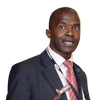
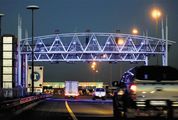

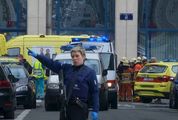



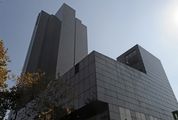






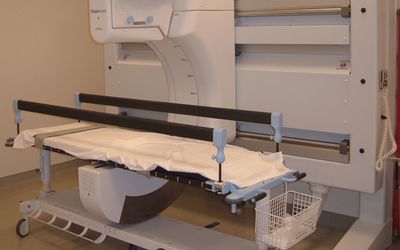




Change: -1.52%
Change: -1.70%
Change: -1.84%
Change: -1.60%
Change: -1.52%
Data supplied by Profile Data
Change: -0.64%
Change: 0.12%
Change: -1.52%
Change: 0.00%
Change: 0.10%
Data supplied by Profile Data
Change: 0.73%
Change: -0.11%
Change: 0.63%
Change: 1.18%
Change: 1.40%
Data supplied by Profile Data
Change: 0.72%
Change: 0.71%
Change: -0.13%
Change: 0.33%
Change: -0.15%
Data supplied by Profile Data